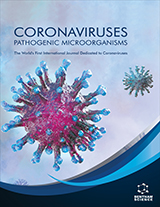Abstract
Many parasitic diseases are an important cause of mortality and morbidity in humans. The resurgence of malaria and trypanosomiasis in countries where these diseases have been effectively controlled and the global increase of several other parasitic diseases, such as cryptosporidiosis and trichinosis [1] are major health problems. The WHO Special Programme for Research and Training in Tropical Diseases (TDR) includes seven parasitic diseases (African trypanosomiasis, leishmaniasis, malaria, schistosomiasis, Chagas disease, lymphatic filariasis, onchocerciasis) and one vector-borne viral disease (dengue) among ten major infectious diseases in its current disease portfolio [2]. In spite of the great importance of these pathogens and the considerable efforts made to develop vaccines against parasitic infections, at present there are no licensed vaccines or immunotherapies for these human diseases. This is in part due to the genetic and antigenic complexity of these organisms, and to their ability to evade the immune response, which is often not completely efficient in parasite elimination. However, in recent years much progress has been made in understanding the immune mechanisms controlling parasitic infections, thus establishing the scientific background required for the design of safe and efficient vaccines against human parasites. Moreover, sequencing of genomes of protozoan and metazoan parasites will facilitate the development of new drugs and vaccines [3]. This issue summarizes recent developments in immunoprophylaxis and immunotherapy of major human protozoan diseases (malaria, leishmaniasis, Chagas disease, toxoplasmosis and cryptosporidiosis) and helminthiasis (schistosomiasis, trichinellosis and hydatidosis).
 3
3


















